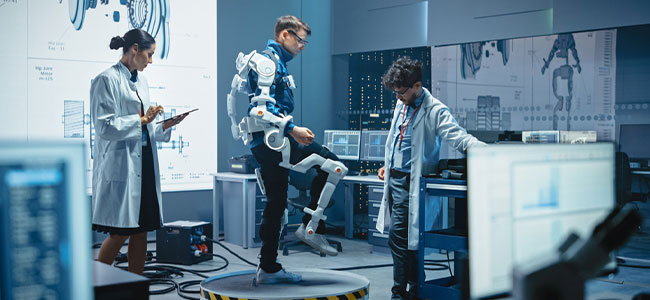Creating a More Sustainable Future Workforce Through Exosuits and Human Augmentation
Exoskeletons, once only seen in the realm of science fiction, have broken into our workplaces with a promise of a safer, more efficient and sustainable future of work.
Businesses in industries and critical infrastructures that rely on manual handling are facing severe labor shortages, made even more challenging as workers age or fall out of the labor force on a temporary or permanent basis due to injury. According to the World Health Organization (WHO), musculoskeletal disorders (MSDs) affect around 1.71 billion people globally and are the leading contributor to disability worldwide, with low back pain being the single biggest cause.
Repeated heavy lifting is an activity that places considerable strain on the musculoskeletal system, which can lead to the development of MSDs. The Center for Disease Control (CDC) cites that US companies spend$50 billion on the direct costs of MSDs – with indirect costs amounting up to five times this amount, according to OSHA figures. And as populations continue to age, these figures will rise. Smart wearables and exosuits can be an answer to address these challenges.
Exoskeletons, once only seen in the realm of science fiction, have broken into our workplaces with a promise of a safer, more efficient and sustainable future of work. These innovative wearable devices are not just transforming industries; they’re empowering employees and making the companies deploying them stand out as more attractive places to work. Among exoskeletons, it’s the active (powered) types that are emerging as the most effective solutions when it comes to providing support for the lower back in heavy-lifting work environments.
Symbols of Forward-Thinking Workplaces
Exoskeletons are fast becoming symbols of forward-thinking workplaces. Beyond revolutionizing workplace safety, smart and connected devices offer a multifaceted approach to creating a more sustainable workforce, one where employees are safer, healthier, happier and more productive.
Imagine manual handling workspaces where physical strain and injury risks are drastically reduced, where repetitive tasks are made lighter and where every employee is equipped to excel. This vision is becoming a reality, with exosuits poised to become indispensable assets in our evolving work landscape. This would make physical work in such work environments more appealing, thereby helping to attract and retain workers in jobs that are characteristically system-critical.



